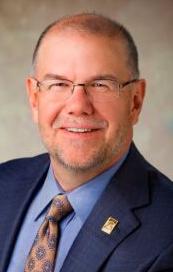Tucson might do better funding its own long-term transportation projects rather than sticking with a regional group of governments that divvies up funding and schedules the work, a new memo from City Manager Michael Ortega says.
The memo comes after years of concern from city leaders that Tucson gets too few projects despite being the largest city in the group and paying the most into the Regional Transportation Authority.
At issue is Tucson’s participation in RTA Next. That’s the latest 20-year plan put out by the RTA. Its members include Tucson, along with cities, towns and tribal communities across Pima County.
Generally, the RTA votes on major transportation projects across the county and each jurisdiction has an equal say it what is approved regardless of its population or the amount of money it drops into the funding pool. That means, for example, that the square-mile city of South Tucson has as much say on projects as much larger Tucson.
New financial projections show the city might lose potential funding for its transportation needs if it stays in the RTA Next plan, Ortega says in the memo.
“I may not be able to in good conscience recommend the City of Tucson continue to participate in RTA Next,” Ortega says in the memo. “In essence, by participating in RTA Next, the City would basically give up approximately $640M of revenue over the next 20 years or approximately $32M annually.”
In 2006, Pima County voters approved a half-cent sales tax to fund $2 billion worth of transportation projects. But revenue came in much lower than expected, leaving an estimated $500 million shortfall to complete the projects promised to voters 18 years ago.
That deficit underscored the innerworkings of the committee that has been drafting the projects for the next Regional Transportation Authority ballot measure, which is set to go before voters in the spring of 2025.
The RTA Board, the nine-member governing body of top elected officials from the region’s cities, towns and tribal communities, told the committees working on the upcoming 20-year plan, known as RTA Next, to fit the new proposed projects within the most pessimistic revenue projections, about $2.34 billion.
‘Fiscally irresponsible’
Ortega had directed his staff to contract with the University of Arizona’s Eller College of Management’s Economic and Business Research Center (EBRC), to “confirm and develop a forecast of anticipated revenue” for the city’s general sales tax of 2%, the half-cent (0.5%) sales tax from Prop 411 and the 0.1% zoo sales tax.
At their last meeting, Tucson mayor and council approved a special election date for a new half-cent sales tax. Also included in the projections, Ortega wrote, was a 20-year projection for a half-cent sales tax like the one up for a vote in August, “to compare with the expected productivity of the RTA/RTA Next” sales tax.
The work at Eller began in January and was finished earlier this month, but it did not provide any research or comparison analysis of the RTA revenues, said George Hammond, the center’s director. That was done by Ortega and staff.
“The new forecast for the productivity of a 0.5% sales tax levied only within the City of Tucson for a 20-year period from 2024 through 2043 ranges from $1.83 ... to $1.65 billion,” Ortega wrote of the projections.
The projected revenue from Tucson in the most pessimistic forecast, $1.65 billion, represents over 70% of the RTA’s $2.34 billion total for the entire region, Ortega wrote. That “significantly underestimates” its revenue production, even under “unfavorable economic conditions,” Ortega wrote .
On average, he said, the city generated 63% of the total RTA tax collections since fiscal year 2019.
“The second challenge is more significant,” the memo says. It is “directly related” to the city’s participation in a future regional transportation plan. Two separate plans brought to the RTA board in December, would send about $806 to $840 million or $911 to $928 million to the city, respectively.
Another proposal, a modified plan brought forward by the Technical Management Committee, sends about $1. billion in RTA Next funding to Tucson over 20 years, but the city’s participation outweighs the revenue it receives, Ortega says.
And even if the RTA Next budget used optimistic projections, Ortega wrote, and if the entire tax collection increase of about $310 million was allocated to Tucson in its entirety, “it would still fall short of what (Tucson) could potentially realize if we were to solicit and receive approval from the voters for our own 0.5% sales tax.”
“I have been a proponent of a regional approach to solving the challenges we all face including transportation and I still believe in a broad regional approach as I continue to see value in it; however, when you simply look at the numbers, it would be fiscally irresponsible for us to leave $32M on the table every year in the name of a regional approach,” Ortega said.
‘Good regional team player’
Ward 6 councilman Steve Kozachik “does not see any way” he can support an RTA Next plan, as presently constructed, based off the data provided in Ortega’s memo.
“For quite a while I’ve been questioning the wisdom of signing onto what the RTA is asking us to do. Now with the Eller data it should be pretty clear, even to the RTA director that the city is being asked to agree to something that no other jurisdiction in the region would agree to if the shoe was on their foot,” Kozachik wrote recently in his weekly newsletter.
“Without a significant change in the RTA Next plan, I don’t see any way I can support asking city residents to forego $32M every year for the next 20 years simply to be a good regional team player,” Kozachik wrote.
Mayor Romero, Tucson’s representative on the RTA Board, was not made available for an interview with the Star on this topic. Instead, a spokesperson for her suggested to “tune into the council meeting” this week, to get “the pulse since she’s very in tune with her colleagues and what they have to say.”
Thinking regionally, not ‘parochially’
Directly citing Ortega’s “fiscally irresponsible” comment, Pima County District 1 Supervisor Rex Scott says Ortega’s memorandum was not surprising, and that it “sums up” both its purpose and where the RTA Board currently stands.
“That sentence sums up both the purpose of the memo in terms of the information that Mr. Ortega wanted to share with mayor and council, and also where we are as a board,” Scott said. “We still have a lot of things that we have to talk about. We still have a lot of things that we have to resolve before we can put an RTA next plan out to the public review phase.”
However, Scott said, Tucson pulling out of RTA Next is not a “viable option” for anyone in the region.
“We are just inextricably intertwined in terms of how we work, how we play, how we shop, everything that we do. So, we always have to think and act regionally because no one of us can accomplish as much alone as we can together,” Scott said. “I think there’s a real danger when any of us are starting to think parochially instead of regionally, and that was why I was so appreciative of that sentence in Mr. Ortega’s memo because he’s acknowledging that a broad regional approach is one that he still sees as having great value.”
“The alternative to moving forward with RTA Next is for each of us to go our own separate way,” Scott said. “And we just can’t do that, given the way this region has grown, given the way we are all so interconnected.”
A parochial approach could unintentionally cause an economic downturn in the region, according to the RTA itself.
“Without RTA Next plan investments, the region’s employment base would experience a loss of 54,000 jobs by 2045 and an economic loss of $3.5 billion in cumulative tax revenues,” the authority said in a January infographic.
With RTA Next proceeding, it says, “investments would generate nearly 88,000 new jobs” based on current conditions in the county, with the potential to increase to 102,000 jobs by 2045 “with additional supporting public and private sector investments.”
The initial plan, RTA, provided about 40,000 jobs throughout Pima County and “has supported more than 1,000 transportation improvement projects and services across the region,” the infographic says.
“The Regional Transportation Authority brings more than $110 million annually into the region. This contributes to all our communities and helps them stretch limited state and federal dollars for needed transportation improvements,” RTA executive director Farhad Moghimi said Tuesday in a written statement emailed to the Star.
“A regional approach benefits all communities and strengthens our overall regional network to continue to build a vibrant economy over the long term,” Moghimi said. “More than 1,000 projects have been completed to date giving a solid record of the many significant contributions of the RTA across the region.”
In an email, RTA and PAG communications director Shiela Storm said that because Tucson is a member of the Pima Association of Governments (PAG), the city “will continue to be a member of the RTA under state law.”
“The goal of the RTA is to improve the economic vitality and quality of life of people in the region through a reliable, efficient and safe regional transportation network,” Storm wrote. “Without RTA Next, the City of Tucson would need to identify how to replace approximately $20 million each year for existing transit services now funded by the RTA.”
Tucson’s mayor and council are expected to discuss the RTA topic during the first of two council meetings on Wednesday. An RTA board meeting is scheduled for Thursday at 2:30 p.m.







